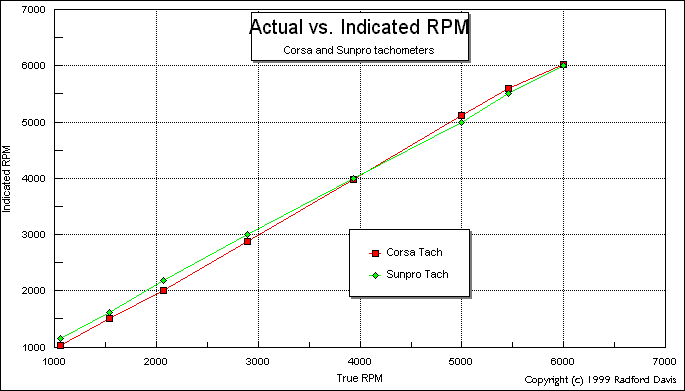
1.Calibration and linearity test: Probescope attatched with computer. Traces taken at various RPM to find calibration points and variation for both the Sunpro reference tach and the Corsa tach:

Note: This test was done before the Corsa tach's meter movement was balanced, and this is obvious in the results in that it reads about the same amount low below 3000 RPM (mid scale, vertical needle) that it reads high above 3000 RPM. Note that the Sunpro tach exagerates the true value between 1000 and 4000 RPM, and that the corsa tach loses its expected optimism between 5500 and 6000 RPM. This prompted further study:
2. Movement linearity measurement: I had observed in earlier testing that the tachometer seemed to have good linearity from 500-3000 rpm (better than the much more modern and complex Sunpro), and had worse linearity from 5000-6000 rpm. I suspected that this was due to a capacitive charge pumping phenomonon I'd observed on the oscilloscope plots at the higher RPMs. To confirm my theory I tested the one other likely cause of such alinearity: the meter movement.
I disconnected the meter movement from my sample 1966 Corsa tachometer in good repair. I balanced the movement, which was somewhat needle-heavy. I then measured the current required to cause a particular amount of meter deflection. The results are impressive, though not unbelievable given the torsion spring system and balancing system used.
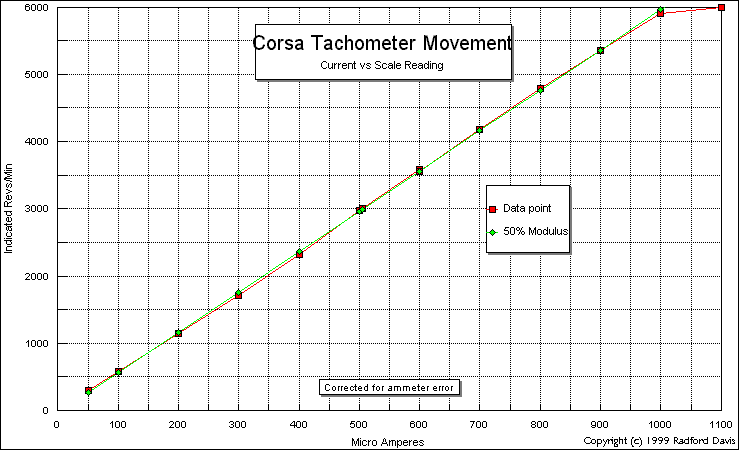
Note that right at the limit of range some alinearity creeps in, but it's between 5900 and 6000 RPM indicated--not normally an area of particular concern to Corvair owners using the original tachometer. More to the point, the alinearity observed in the response curve has little to do with the meter's response.
Here are some ProbeScope data plots from the tach:

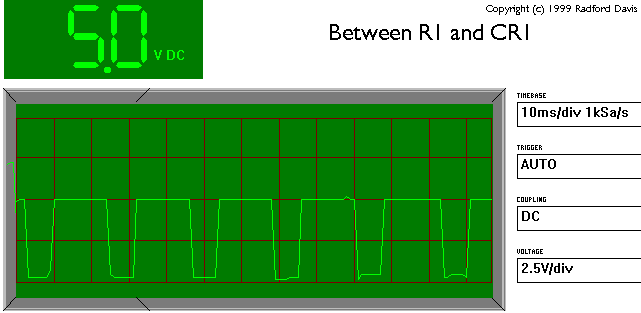
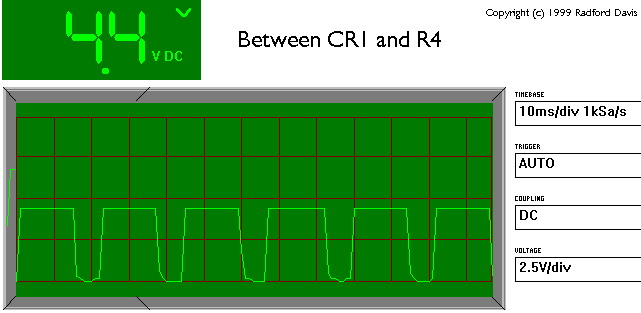
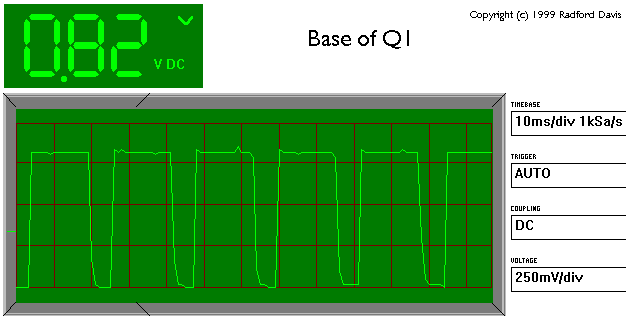
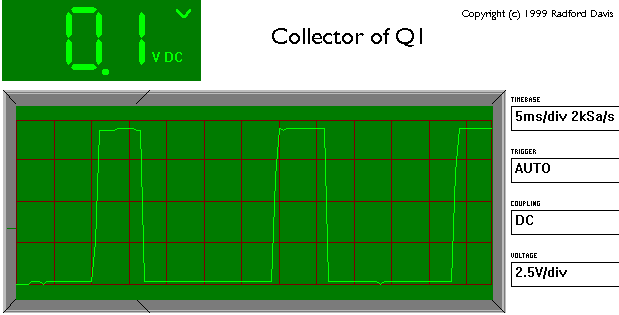
All contents copyright © 1999 Radford Davis. All rights reserved.
![]() Back to
Rad's Fun Stuff.
Back to
Rad's Fun Stuff.